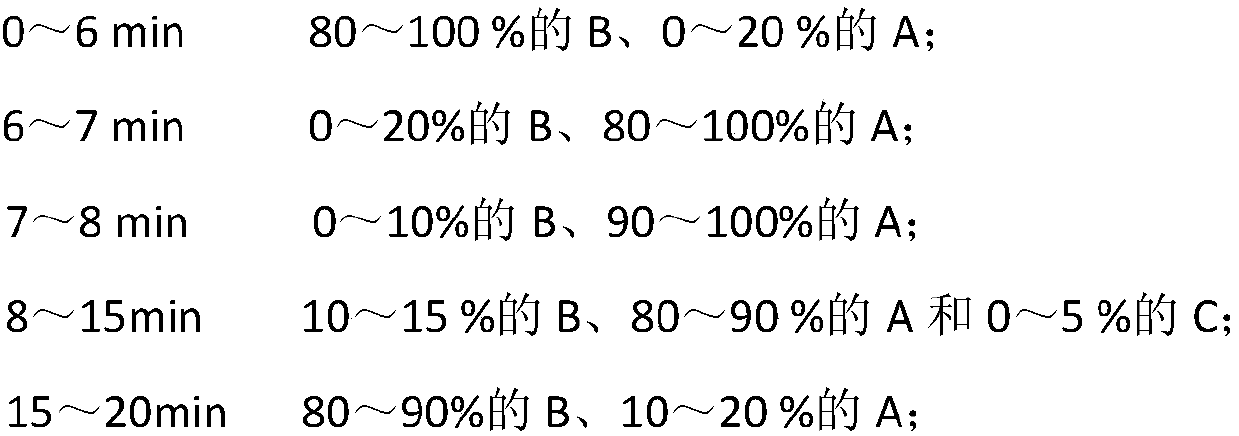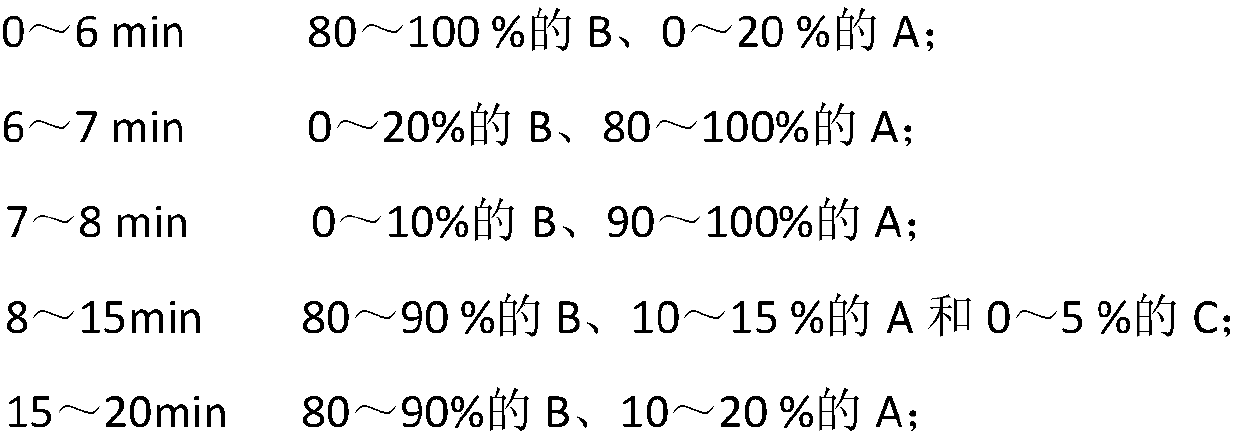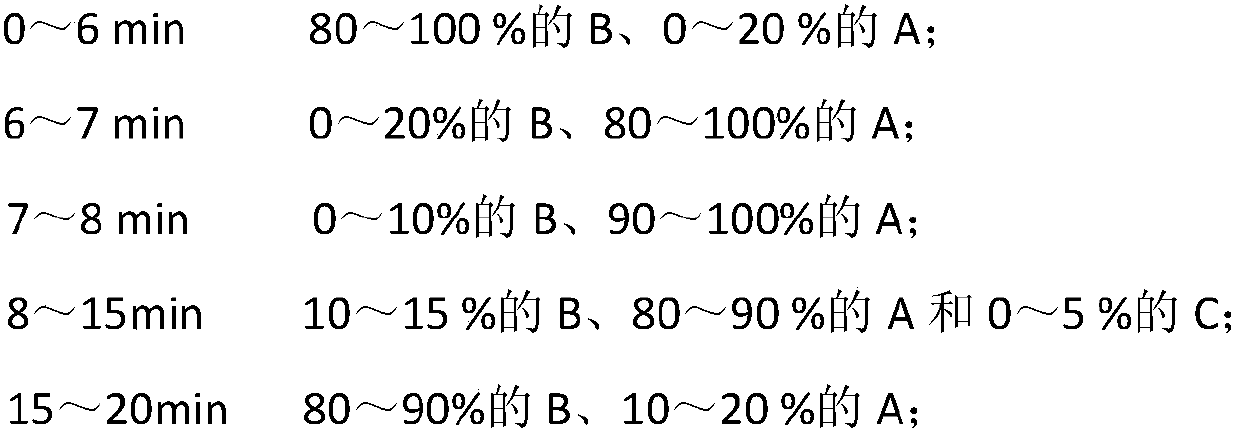Method for analyzing residual antibiotics in beef
A technology of antibiotics and beef, which is applied in the direction of analyzing materials, material separation, measuring devices, etc., can solve the problems of prolonging the detection cycle, high detection limit and quantification limit, time-consuming and labor-intensive, etc., so as to avoid interference of detection results and detect The effect of lower limit and limit of quantitation and improved detection sensitivity
- Summary
- Abstract
- Description
- Claims
- Application Information
AI Technical Summary
Problems solved by technology
Method used
Image
Examples
Embodiment 1
[0066] Embodiment 1 provides a kind of method for analyzing residual antibiotic in beef, comprises the steps:
[0067] (1) Get a certain amount of beef samples to grind and homogenize;
[0068] (2) Weigh 5.00g of the processed beef sample and place it in a 100ml stoppered centrifuge tube, add 25ml of n-hexane to shake and homogenize for 30 minutes, then add 25ml of acetonitrile and 2g of surfactant, vortex and mix for 3 minutes, centrifuge, transfer Take the separated solution, add 25ml of acetonitrile and 2g of surfactant to the filter residue, vortex and mix for 3 minutes, centrifuge, combine the acetonitrile extract, concentrate and dilute to 50ml;
[0069] (3) Take 20ml of the extract obtained in step (2) and add a demulsifier, shake and mix, separate the liquid, transfer the obtained clear liquid to a solid phase extraction column, rinse with 5ml of water and 5ml of methanol aqueous solution in turn, discard The effluent was dried under reduced pressure, eluted with 8ml ...
Embodiment 2
[0086] Example 2 provides a method for analyzing residual antibiotics in beef, which is different from Example 1 in that the antibiotic is josamycin.
[0087] Performance Testing
[0088] 1. Linear correlation test: Quantitative calculation of the sample is performed according to the standard curve matched with the external standard matrix of the target compound.
[0089] The linear correlation coefficient obtained by the test for the josamycin standard substance is: 0.9180.
[0090] 2. Detection limit and quantification limit test: the detection limit of the method is calculated with a signal-to-noise ratio of 3, and the quantification limit of the method is determined with a signal-to-noise ratio greater than or equal to 10.
[0091] The detection limit of the josamycin standard was 4.9 μg / kg; the quantification limit was 28 μg / kg.
[0092] 3. Determination of recovery rate: Do standard recovery test at four concentration levels of 5, 10, 20 and 50 μg / kg.
[0093] The ave...
Embodiment 3
[0095] Embodiment 3 provides a kind of method for analyzing residual antibiotic in beef, and difference with embodiment 1 is that described antibiotic is erythromycin, roxithromycin, tylosin, kitasamycin, rotamycin , Spiramycin.
[0096] Performance Testing
[0097] 1. Linear correlation test: Quantitative calculation of the sample is performed according to the standard curve matched with the external standard matrix of the target compound.
[0098] The linear correlation coefficients of standard products of erythromycin, roxithromycin, tylosin, kitasamycin, rotamycin and spiramycin were 0.9672, 0.9505, 0.9699, 0.9990, 0.9988 and 0.9996, respectively.
[0099] 2. Detection limit and quantification limit test: the detection limit of the method is calculated with a signal-to-noise ratio of 3, and the quantification limit of the method is determined with a signal-to-noise ratio greater than or equal to 10.
[0100]The detection limits of erythromycin, roxithromycin, tylosin, ki...
PUM
| Property | Measurement | Unit |
|---|---|---|
| recovery rate | aaaaa | aaaaa |
| recovery rate | aaaaa | aaaaa |
| recovery rate | aaaaa | aaaaa |
Abstract
Description
Claims
Application Information
 Login to View More
Login to View More - R&D
- Intellectual Property
- Life Sciences
- Materials
- Tech Scout
- Unparalleled Data Quality
- Higher Quality Content
- 60% Fewer Hallucinations
Browse by: Latest US Patents, China's latest patents, Technical Efficacy Thesaurus, Application Domain, Technology Topic, Popular Technical Reports.
© 2025 PatSnap. All rights reserved.Legal|Privacy policy|Modern Slavery Act Transparency Statement|Sitemap|About US| Contact US: help@patsnap.com



